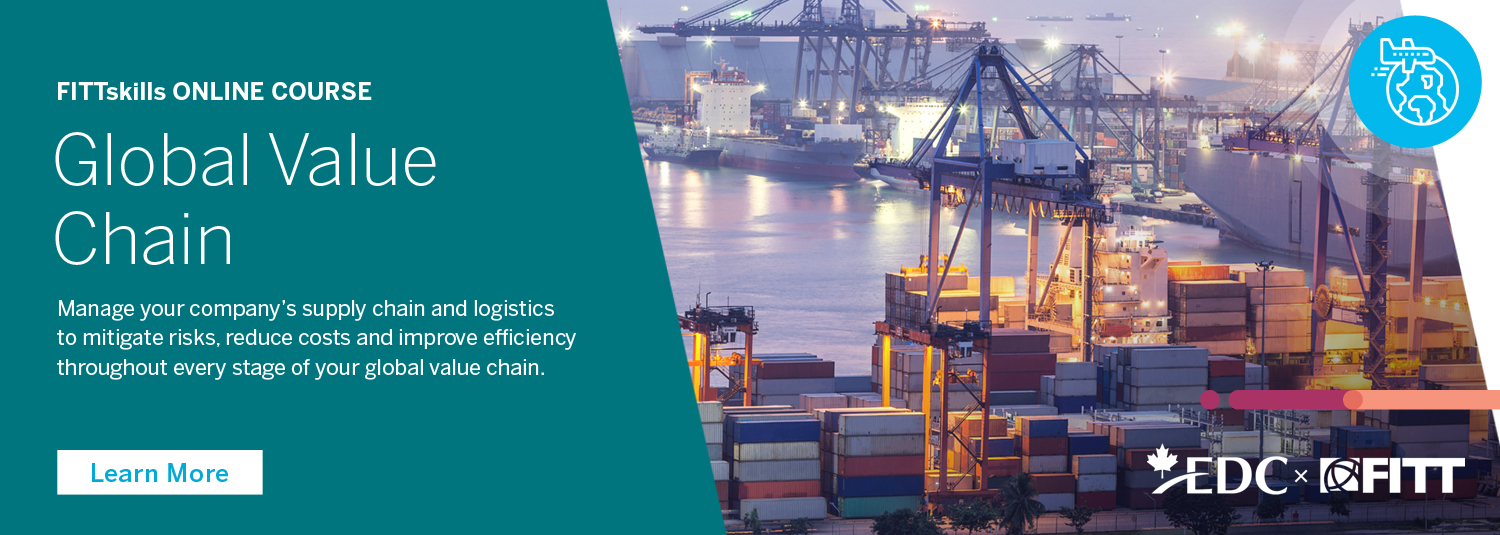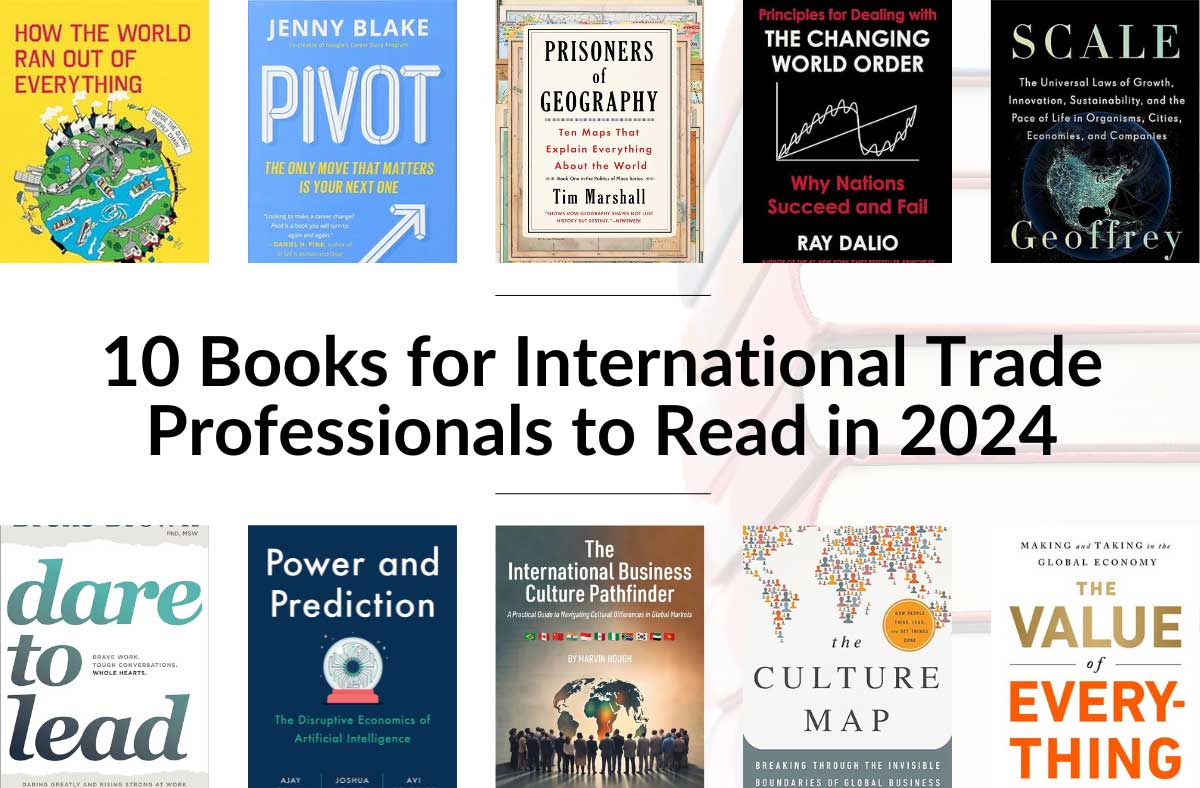 Making the decision to globally source raw materials and/or components for your organization’s core activity requires careful consideration. It’s a tough decision for any organization. You must determine whether it’s best to gain cost advantages at the expense of some control of your organization’s core activities, or if globally sourcing goods would be too costly to your organization.
Making the decision to globally source raw materials and/or components for your organization’s core activity requires careful consideration. It’s a tough decision for any organization. You must determine whether it’s best to gain cost advantages at the expense of some control of your organization’s core activities, or if globally sourcing goods would be too costly to your organization.
As described in the FITTskills Global Value Chain textbook, a savvy international trade practitioner will look at these 9 factors before they decide to globally source their organization’s goods.
1. Characteristics of the Raw Materials and Components
Many aspects of the strategic procurement process are affected by the characteristics of the goods begin sourced. Will goods be import as raw materials or as components for manufacturing? Is the supply of raw materials limited? Will modifications be made to the goods before they are sold?
The characteristics of the goods being sourced can impact costs (e.g. taxes, tariffs, duties, fees), logistics (e.g. transportation, storage and handling requirements), and time frames. These characteristics need to be considered throughout the procurement process.
2. Monetary Risk
Although the use of foreign suppliers can save costs due to factors such as lower costs of labour and proximity to raw materials, there are also risks that can impact costs including:
- Unanticipated and rising shipping costs
- Cost of delays or loss of goods in transit
- Rising costs of transactions, such as documentation fees, contract management fees and third-party supplier audit fees
- Costs related to time zone differences, extra time for storage or transport delays, e.g. approval is given in one country, but the time difference or traditional days off mean the action cannot be enacted until the next business dayMany organizations use primary and secondary sourcing as a mitigation strategy. A primary source is used as long as it meets company requirements for supply, delivery, and quality while a secondary supplier is available to cover shortfalls. Often the secondary supplier in on-shore or near-shore in order to address supply issues quickly, and although typically more expensive, this can prevent greater monetary risk to the organization due to lost customers purchasing competitors’ products.
There are also financing tools available to organizations to offset financial risk, such as hedging against currency fluctuations, factoring, and forfaiting.
3. Competitive Advantage
When considering global sourcing, an organization must weigh the impact on its competitive advantage.
Protection of intellectual property and quality are important aspects of competitive advantage. Organizations who believe their intellectual property is absolutely core to their competitive advantage should be very selective about the components they source from global suppliers. The more an organization has to divulge of its proprietary information, even in terms of specifications, the greater the risk to its competitive advantage.
Organizations must also keep the purpose of global sourcing in mind, by ensuring their costing is realistic and includes all the costs of sourcing, such as planning, transition, and implementation costs. If a competitive advantage is to be gained by lowering costs, it is important to ensure there are no hidden costs that will eliminate any realized cost advantage.
Organization must ensure they understand what their competitive advantage is and all the factors of global souring so they can best utilize, protect, and enhance their competitive advantage.
Want to learn more about how to minimize your risk and keep your goods safe by taking all measures needed to prepare them for transport? Check out the FITTskills Global Value Chain online course. 
4. Culture
Cultural differences can complicate business communications, causing such issues as shipping delays and incorrect orders.
Miscommunication can severely disrupt and frustrate business dealings, making international sourcing a negative experience for all parties involved.
Being culturally sensitive can help mitigate this risk.
Global sourcing success requires the understanding of the cross-cultural differences between the sourcing organization and the potential supplier. If the key players in global sourcing initiatives are not aware of the impact of their behaviours on the interactions with potential suppliers, the resulting misunderstandings, miscommunication and hurt feelings will prevent any attempts at business agreements.

5. Ethics
Ethical business practices in other countries cannot be assumed as a standard practice. Although sourcing organizations are seeking the lowest prices, there can be negative backlash from customers if they find that, for example, farmers or mine workers are exploited or purchases are funding wars and insurgents, such as the “blood or conflict diamonds” of Sierra Leone, Angola, and Ivory Coast.
In developing countries, producers of certain raw commodities, such as coffee, bananas, cocoa, sugar, tea, and cotton, are being assisted by the Fair Trade social movement, which seeks to ensure producers receive equitable compensation and serves to promote sustainable community development.
The Fair Trade movement believes buying goods from producers, at a fair price, is more efficient and sustainable than traditional forms of international aid.
Although the concept of fair trade began in the 1960s, Fairtrade International only launched the certification program and the Fairtrade label in 2002. The focus is on agricultural commodities produced in developing countries. The movement is supported by many non-profit organizations as a means to address exploitative labour practices, such as forced and child labour. It also seeks to ensure a fair return to farmers so they can support themselves and their families.
6. Regulatory Environment and Compliance
Other countries have different standards, laws, regulations, and business practices that can impact sourcing from other countries, either by adding costs or requirements that would be considered illegal in one’s own country. It is always important to remember to conduct business from the perspective of the end customer. Questionable practices that can be related to an organization’s product can have a negative effect on an organization’s brand and reputation.
7. Quality
The implications of a quality failure from an international source are much more severe than a quality failure from a domestic source. With lead times involving different time zones and much longer distances, it can take several months to rectify a quality problem. Quality issues also affect downstream supply chains.
Poor quality increases the rate of returns from unhappy customers, which results in discounting, recycling, or disposal (write-off) of defective products.
All these increase reverse supply chain costs, which negatively impacts the bottom line.
Companies can help ensure the quality of supplies by sourcing suppliers that implement quality-management systems, such as those of the International Organization of Standardization (ISO). However, higher standards of quality will mean some potential suppliers are not eligible for the supply chain, minimizing the number available.
8. Logistics
Once quality supplies have been secured, the next consideration is managing their transportation. Even assuming transport costs have been factored into the feasibility research, there are still risks in transportation that are beyond the control of the exporter and importer because supplies are generally in transport for long distances and for long periods of time.
9. Intellectual Property Protection
Sourcing international suppliers for raw materials or components doesn’t pose a high risk for loss of intellectual property compared to outsourcing manufacturing. However, there is an intellectual property protection risk, if the components contain proprietary design or material elements or require proprietary equipment.
Is our list missing anything? How would you prepare when deciding whether or not to globally source your goods? Let us know in the comments down below.






disqus comments